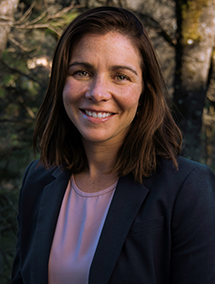< Back to blog
Working with stakeholders to find the right improvements on interconnections
By Danielle Osborn Mills Principal, Infrastructure Policy Development
June 28, 2023
 Last December, when the California ISO signed a Memorandum of Understanding with the state’s two principal energy entities, we renewed our commitment to make significant and transformative improvements to our role in resource planning coordination, transmission planning, interconnection queuing and management, and power procurement.
Last December, when the California ISO signed a Memorandum of Understanding with the state’s two principal energy entities, we renewed our commitment to make significant and transformative improvements to our role in resource planning coordination, transmission planning, interconnection queuing and management, and power procurement.
As California continues adding historic amounts of clean energy to the electric grid, we adopted this more synchronized approach because the ISO and our partners in state government recognized the need for enhanced efficiency and coordination in working to meet California’s reliability and clean-energy goals.
Several key steps have followed since that agreement was signed with the California Public Utilities Commission and the California Energy Commission. Among those steps was the recent approval of the ISO’s
2022-2023 Transmission Plan, which for the first time targets additional transmission and resource capacity in designated geographic zones that make the most economic and operational sense for future development.
Now, continuing with these efforts,
Track 2 of our 2023 Interconnection Process Enhancements (IPE) is well underway as we work with stakeholders to improve how we review and analyze applications for connecting new generating resources to the grid.
Changes to our interconnection process are needed because this accelerated pace of development is driving significant competition, leading to unprecedented amounts of interconnection requests. This has overwhelmed a process that was designed to interconnect more moderate amounts of new resources over the past decade.
 In the past two interconnection request application windows, the ISO received vastly increased numbers of requests from potential resource developers, reflecting the state’s accelerated pace of bringing online new clean resources. The latest Cluster 15 window alone resulted in 541 separate interconnection requests. These 541 requests make up 354 gigawatts of new capacity, in addition to the existing 187 gigawatts of active requests through Cluster 14, far exceeding California’s most aggressive development goals.
In the past two interconnection request application windows, the ISO received vastly increased numbers of requests from potential resource developers, reflecting the state’s accelerated pace of bringing online new clean resources. The latest Cluster 15 window alone resulted in 541 separate interconnection requests. These 541 requests make up 354 gigawatts of new capacity, in addition to the existing 187 gigawatts of active requests through Cluster 14, far exceeding California’s most aggressive development goals.
What’s needed is a revised interconnection process that prioritizes interconnection requests in a manner that ensures reliability and improves the overall ability of California to onboard new resources to reach its goal of a carbon-free grid by 2045. To help make that happen, our objective in this current IPE stakeholder initiative is to ensure that California’s resource procurement and queuing are effectively shaped to take advantage of existing or planned transmission and interconnection capacity, and to align with the transmission upgrades necessary for longer-term resource development
Along with our stakeholders, we recognize that this is a big and complex undertaking. It is a challenge that system operators and developers throughout the nation are dealing with as part of the energy transition occurring in our country. While everyone involved in our process seems to agree it needs to be improved, there are many different opinions on the best way to proceed. The ISO is committed to considering all the good ideas put forward at various workshops and in the dozens of written comments from load-serving entities – including those not regulated by the CPUC – and from developers and other stakeholders.
 In our IPE Track Two discussion paper published May 31, the ISO put forward a number of proposed general principles and problem statements to get the conversation started. The Working Group’s mutually agreed-upon principles and problem statements will inform the ISO’s drafting of the IPE Track 2 Straw Proposal.
In our IPE Track Two discussion paper published May 31, the ISO put forward a number of proposed general principles and problem statements to get the conversation started. The Working Group’s mutually agreed-upon principles and problem statements will inform the ISO’s drafting of the IPE Track 2 Straw Proposal.
Our timeline now calls for a final set of proposed changes to be taken to the ISO Board of Governors for consideration at its December meeting so we can resume reviewing – with greater efficiency – the most recent cluster of interconnection applications already in the queue as well as future applications.
There is much more work to be done in the months ahead. But we are confident that with very robust stakeholder engagement and an open, transparent process, we will be able to improve the generator interconnection procedures and our ability to manage large numbers of projects coming into and progressing through the queue. And that will help California and the West obtain the robust capacity levels needed to meet their energy policy goals.
Additional information about this initiative, including stakeholders’ comments we have received and the timeline, can be found on the ISO’s
initiative webpage.
< Back to blog